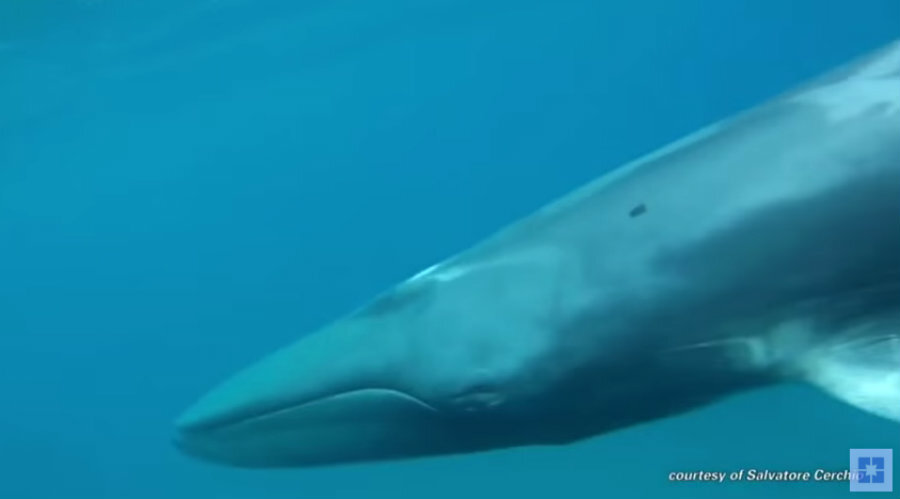Watch first-ever footage of the elusive Omura’s whale
An international team of researchers has published the first-ever video captured of an Omura’s whale, one of the rarest species of whales in the world.
The footage, made public via the New England Aquarium’s (NEAQ) website, was released a week after the scientists published a paper detailing the whales’ behavior and habitat preferences in the shallow waters off Madagascar. The study marks the first definitive field observations of Omura’s whales since the species was identified in 2003.
“What little we knew about these whales previously came primarily from eight specimens of Omura's whales taken in Japanese scientific whaling off the Solomon and Keeling Islands and a couple strandings of dead animals in Japan,” said lead author Salvatore Cerchio, a visiting scientist at NEAQ and guest investigator at the Woods Hole Oceanographic Institution in Massachusetts, in a statement. “This is the first definitive evidence and detailed descriptions of Omura's whales in the wild and part of what makes this work particularly exciting.”
The marine mammals were long misidentified as Bryde’s whales, another species of small, tropical baleen whales with similar dorsal fins – though Omura's whales are slightly smaller and have unique markings on their lower jaws. Indeed, it wasn’t until 2003 that scientists, using genetic data from samples gathered from old whaling expeditions, identified Omura’s whales as a separate species.
When Dr. Cerchio and his team first spotted an Omura’s whale in 2011, they also thought it was a Bryde’s whale. “From the little information [we had] on their habitat and range, Omura's whales were not supposed to be in that part of the Indian Ocean,” Cerchio said.
In 2013, the team moved its area of study into deeper waters. They quickly logged 13 more sightings, and noted the distinct markings – dark and light pigmentation on the animal’s head – that convinced them the whales were Omura’s.
In total, the researchers observed 44 groups of whales and collected skin biopsies from 18 adult specimens. They sent the samples to coauthor Alec Lindsay at Northern Michigan University, who performed the DNA test that confirmed the whales' species in 2014. They also saw four mothers with young calves, and recorded vocalizations that may suggest reproductive behavior.
The team’s observations provide previously lacking information about the elusive species. Cerchio described them to the BBC as “spectacular animals with long, narrow bodies” that, unlike humpback whales and other breeds of the marine mammals, prefer to socialize in loose groupings.
“[I]f you explore the area, you would find another one several hundred meters away,” he told the network.
Cerchio will return to the field in November to do further study on the whales' vocalizations and behavior, and provide an estimate of the species’ population.






